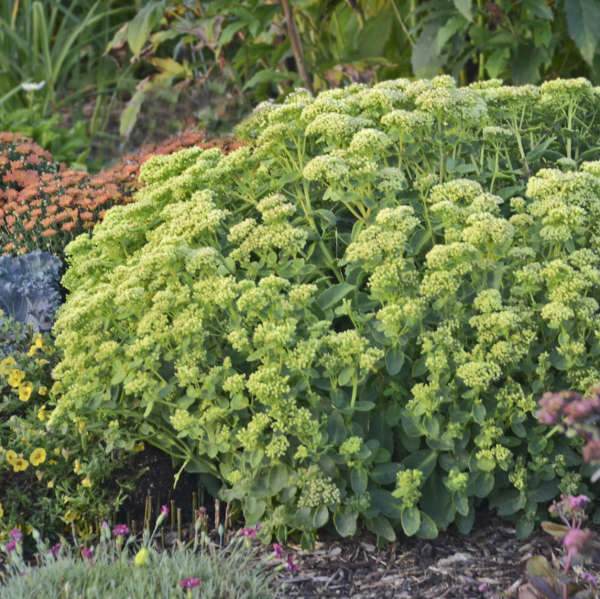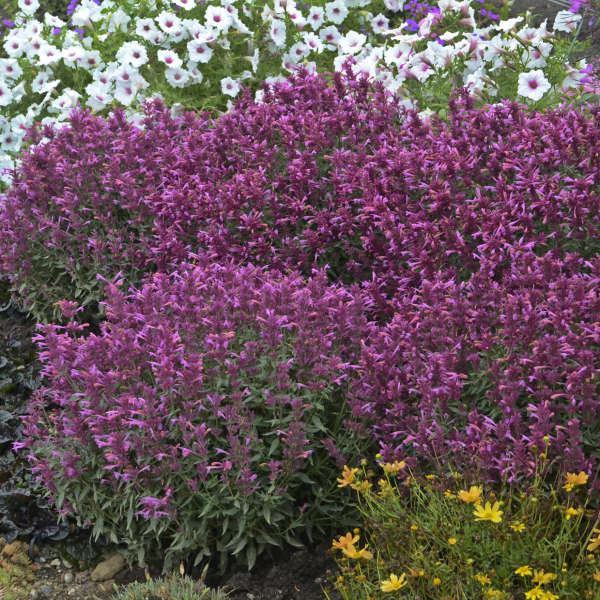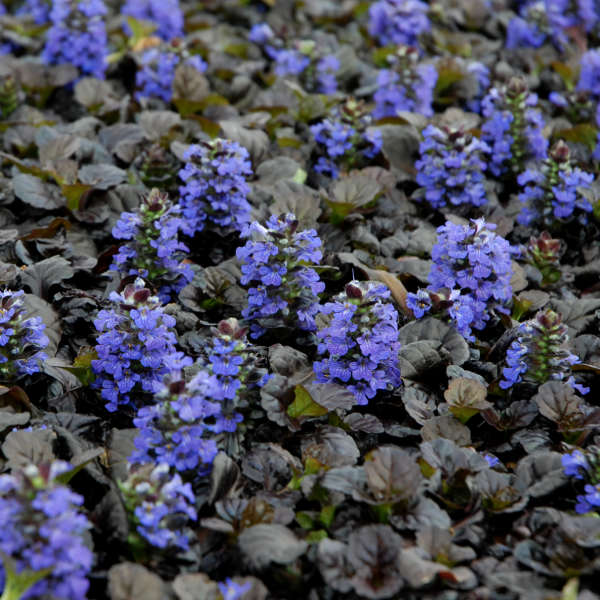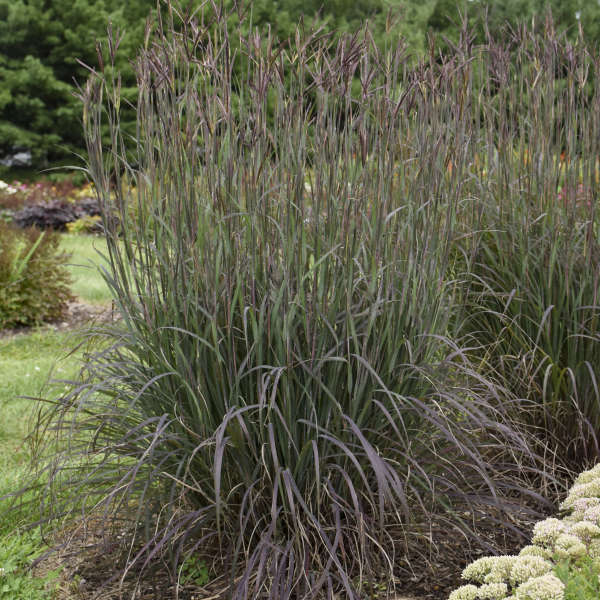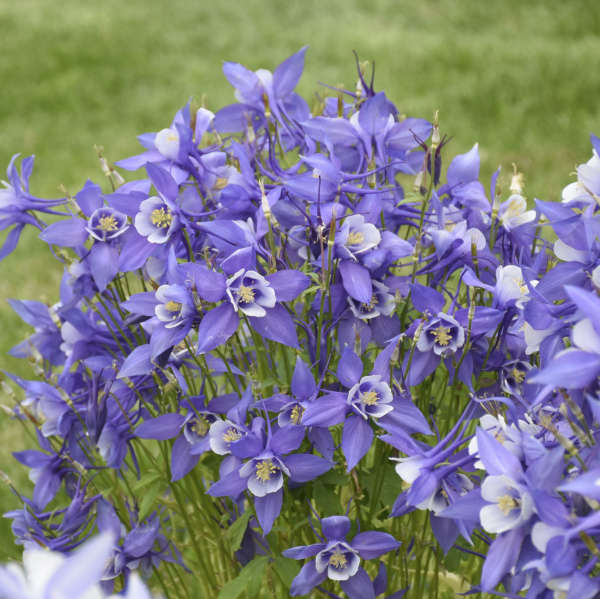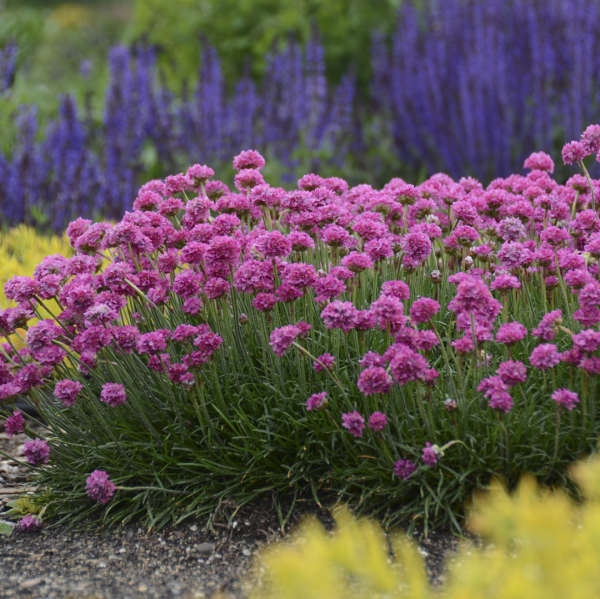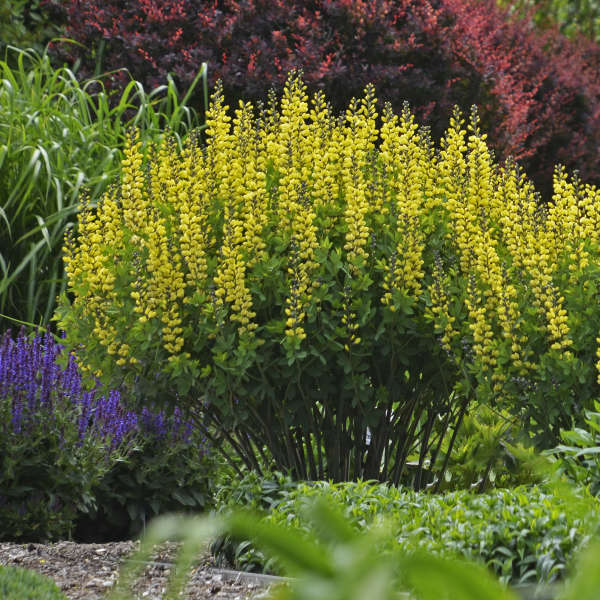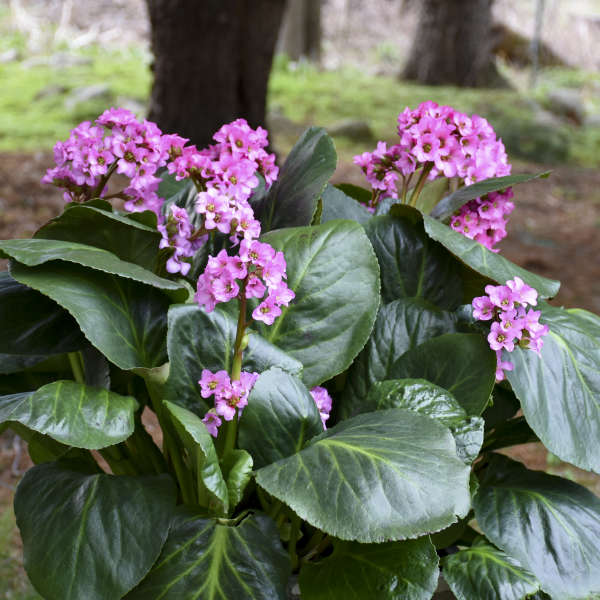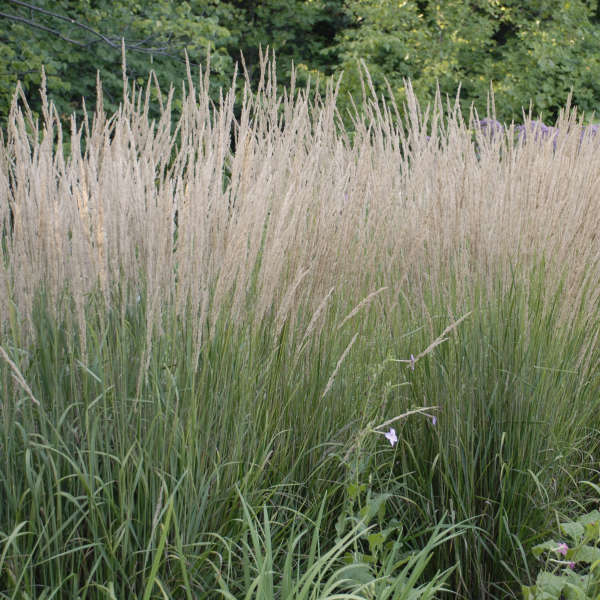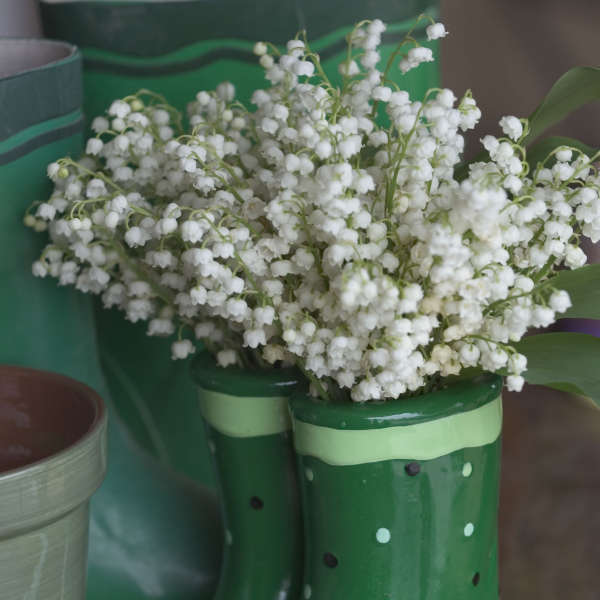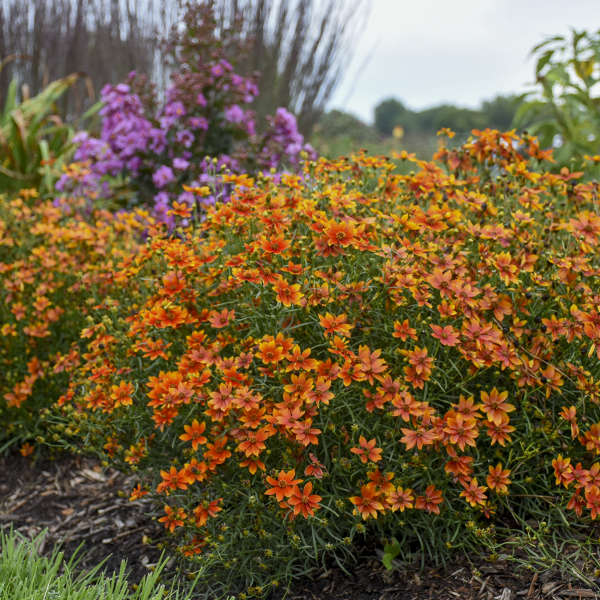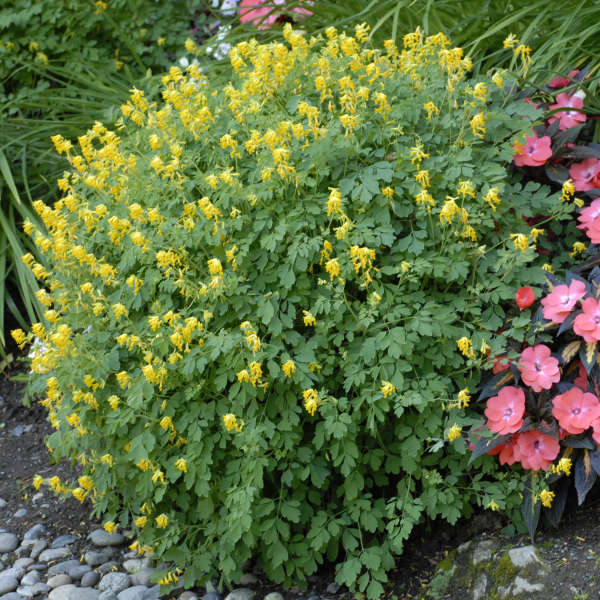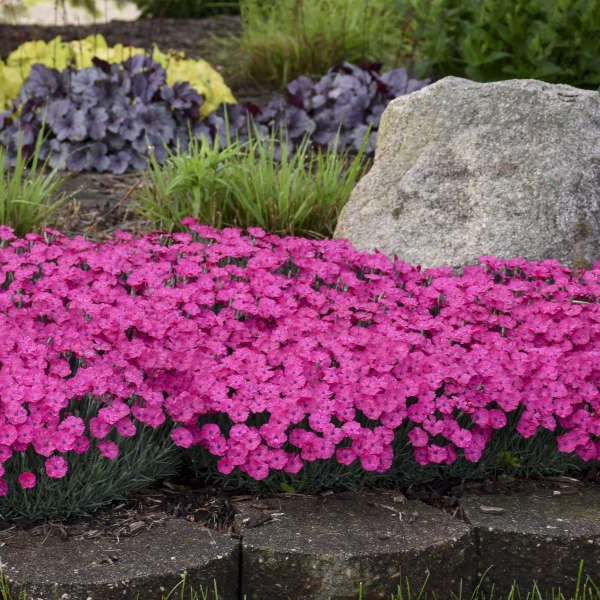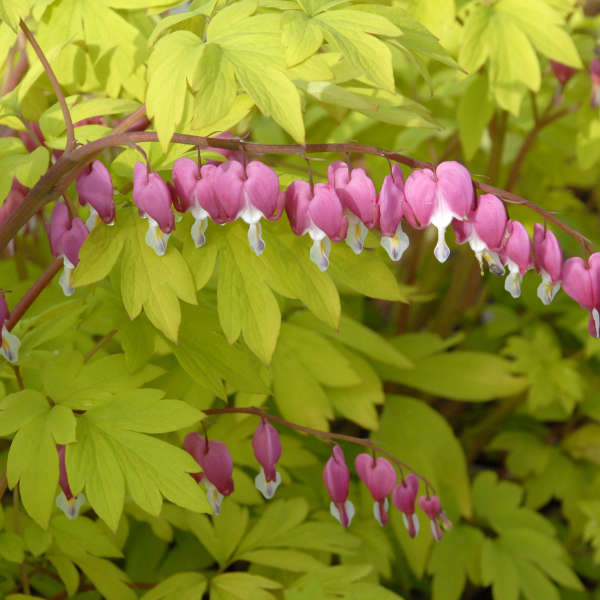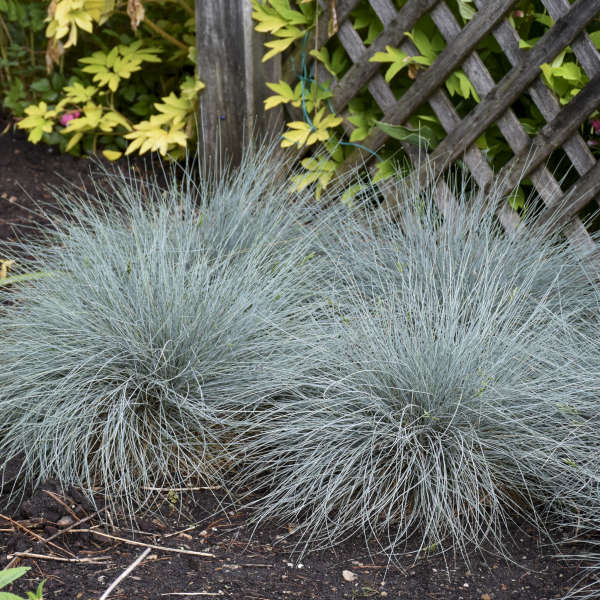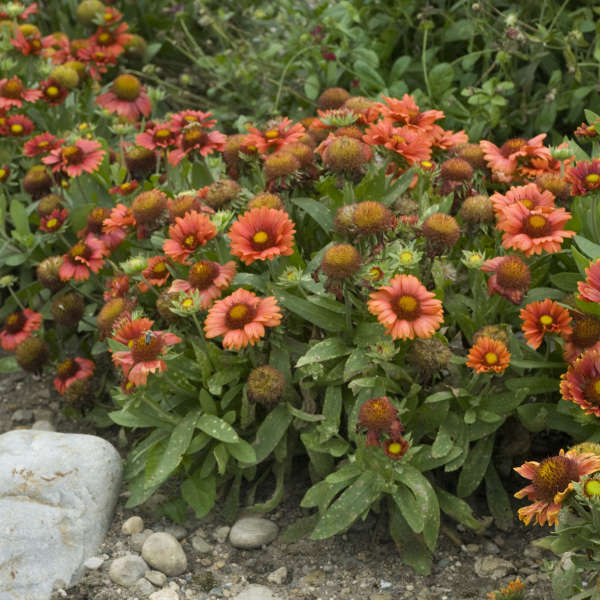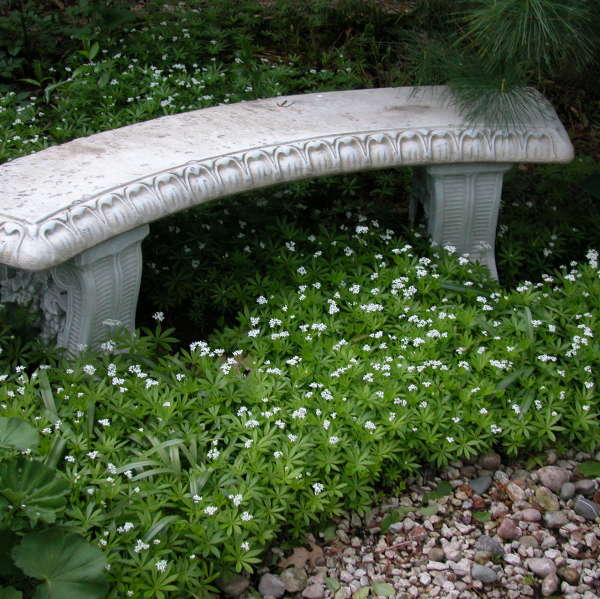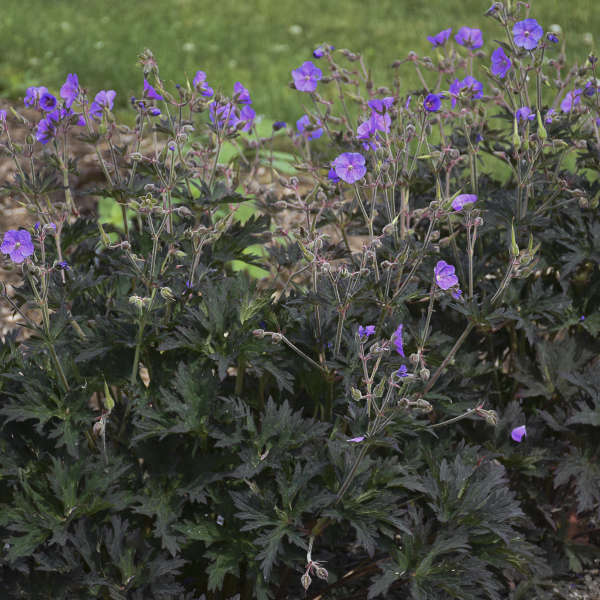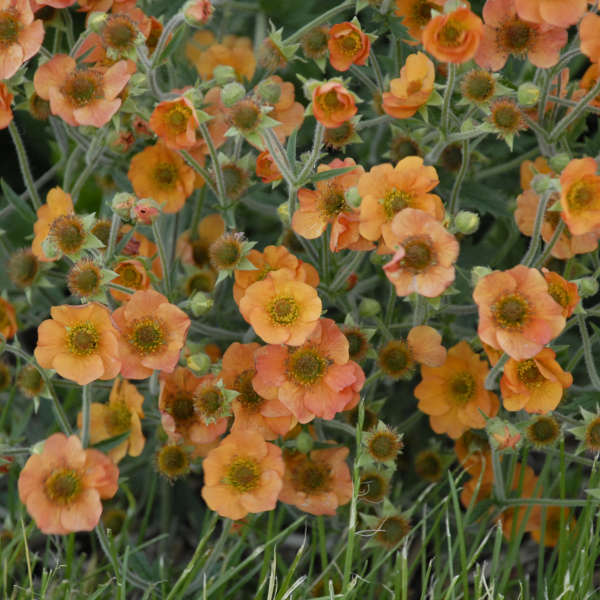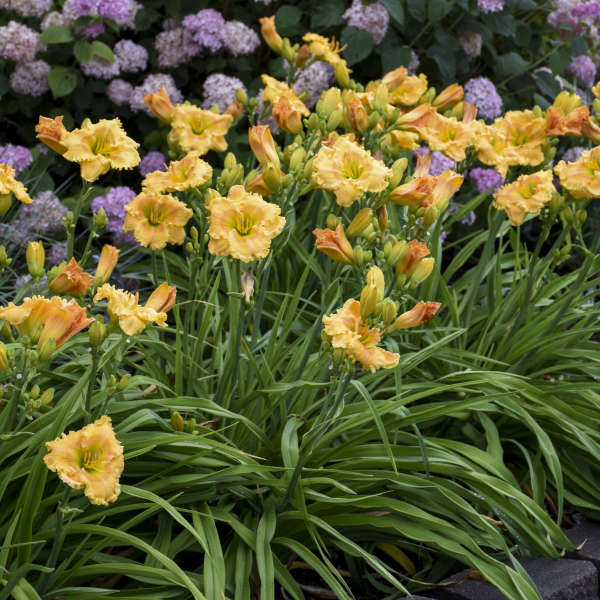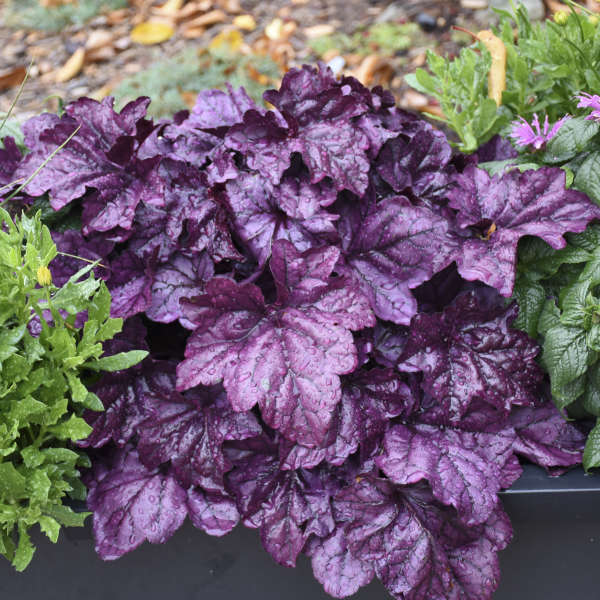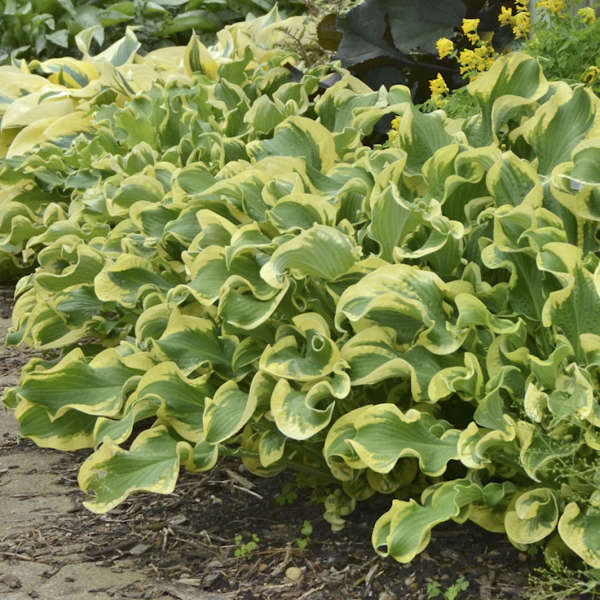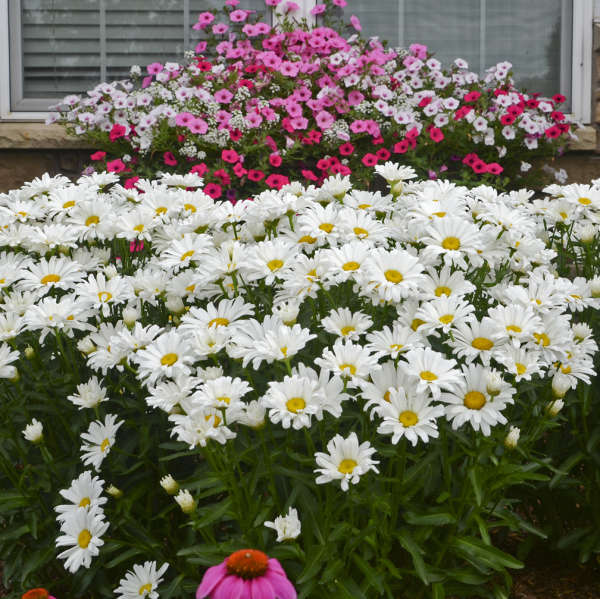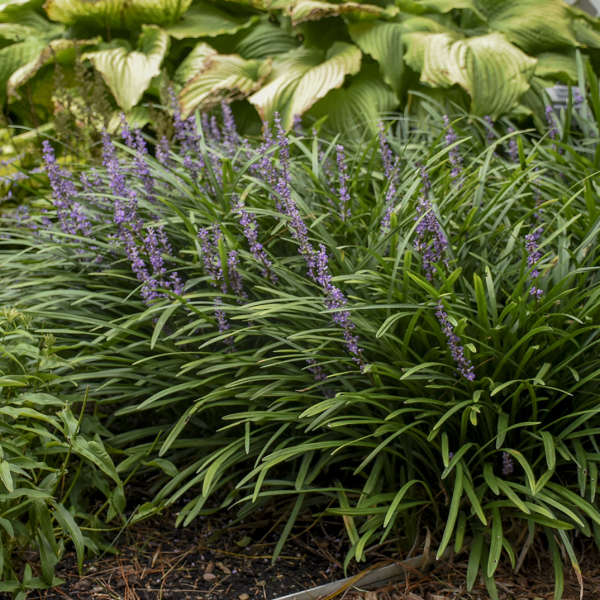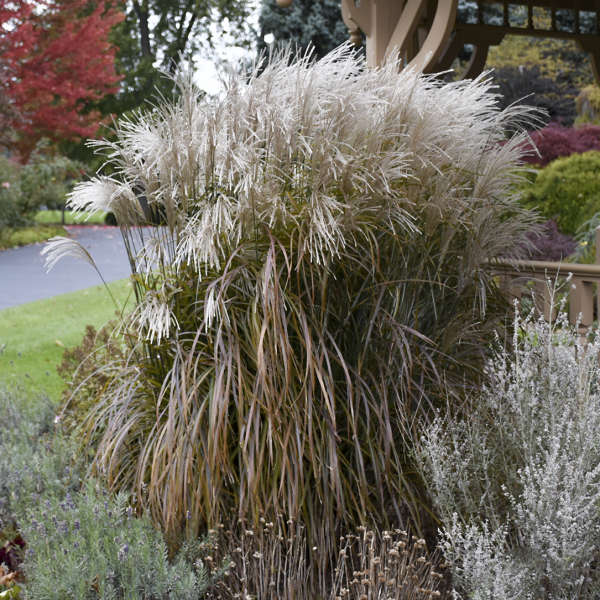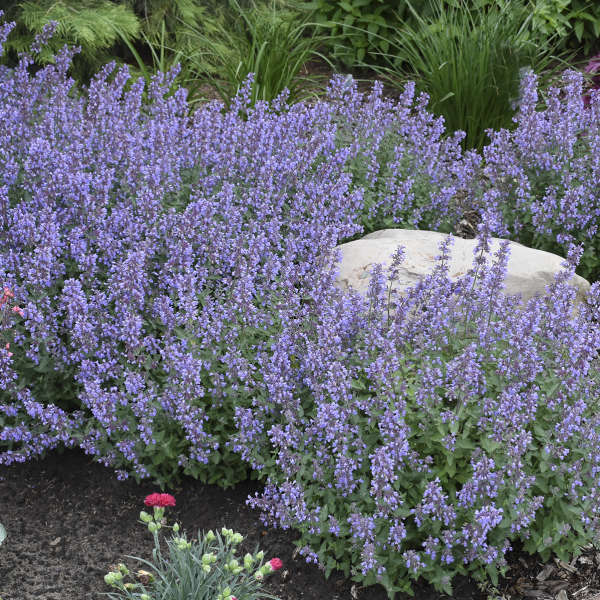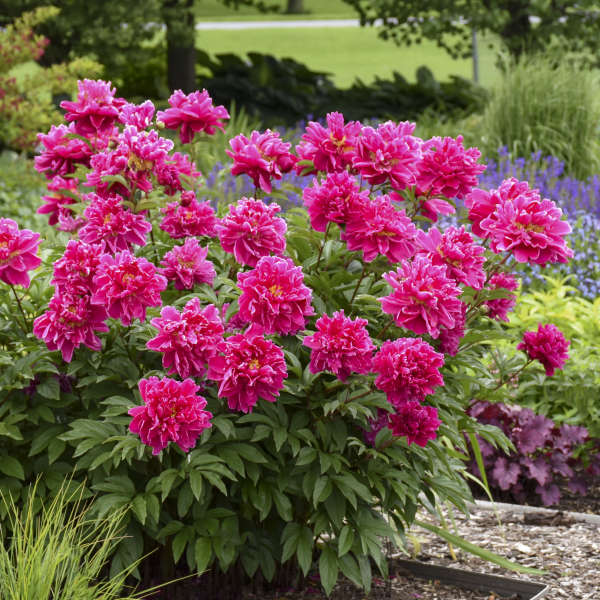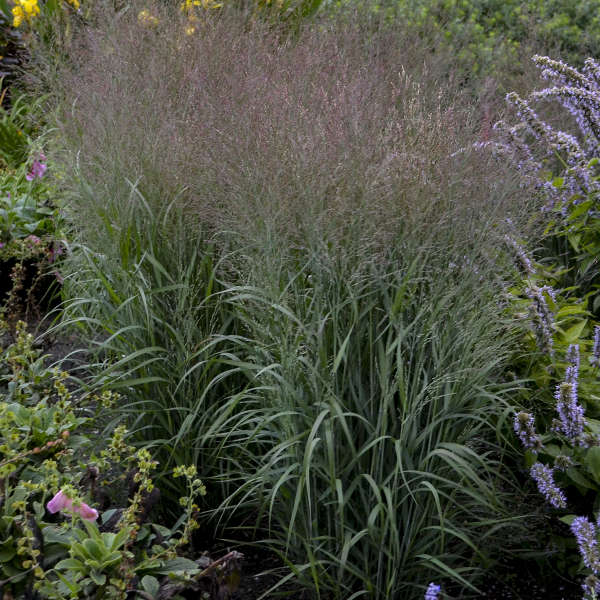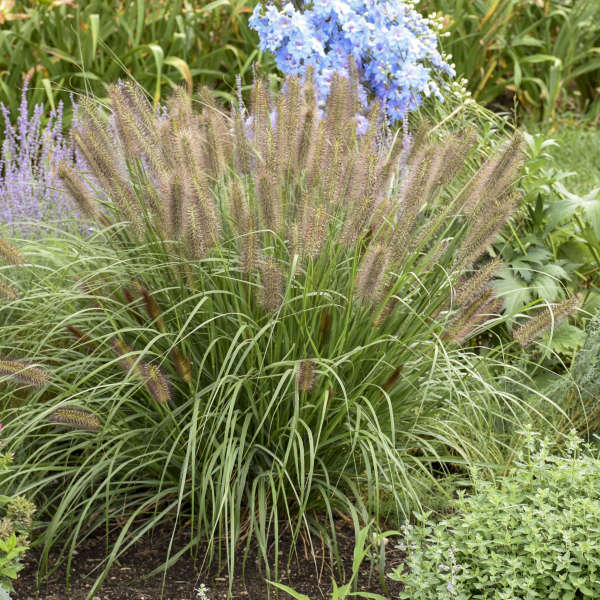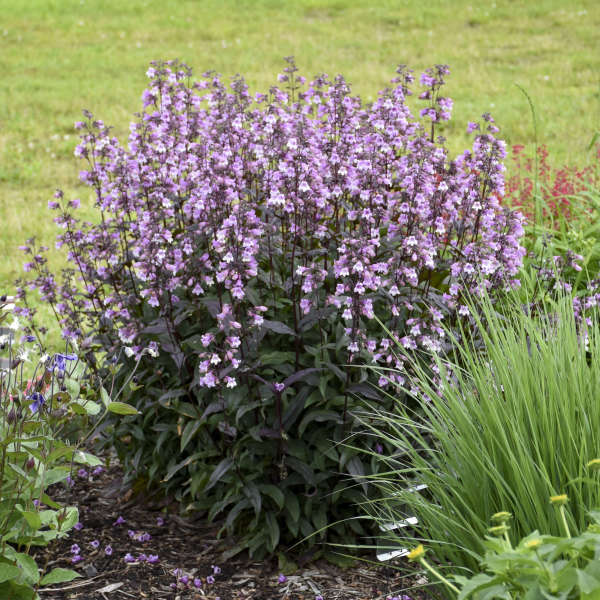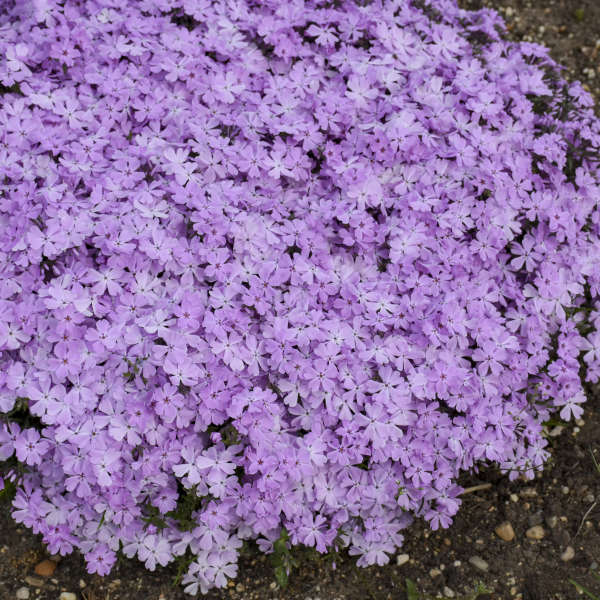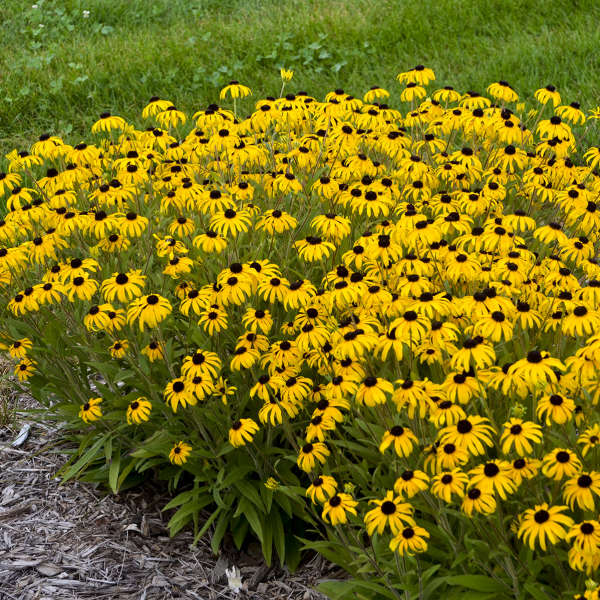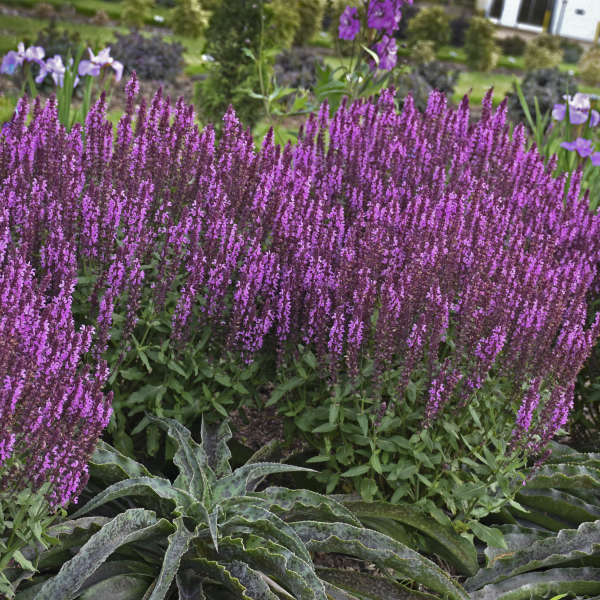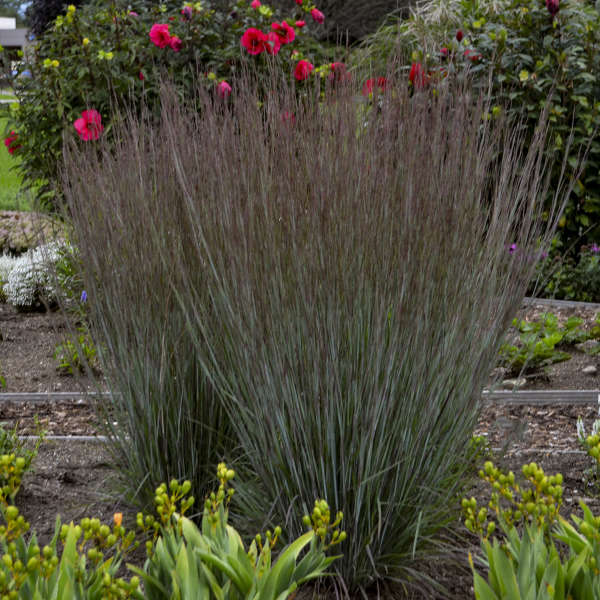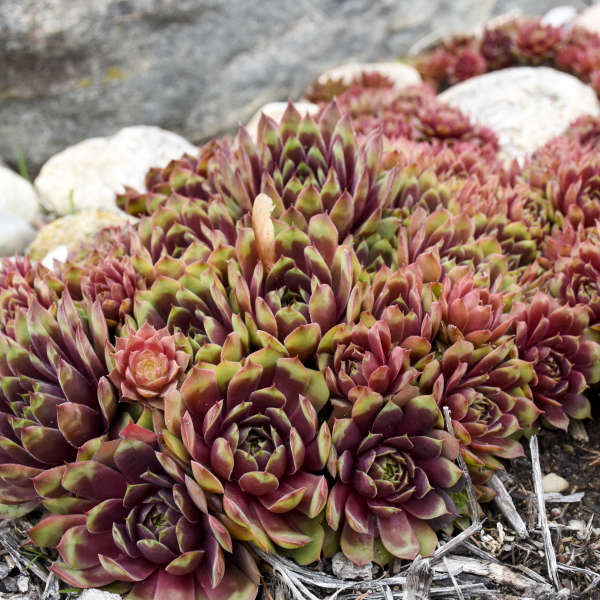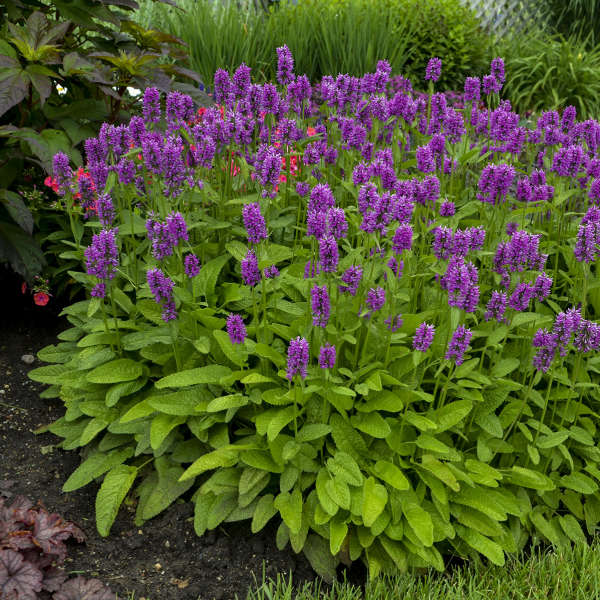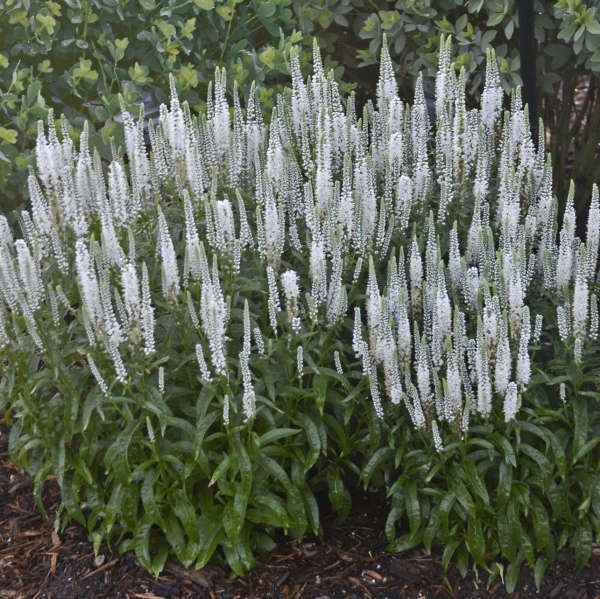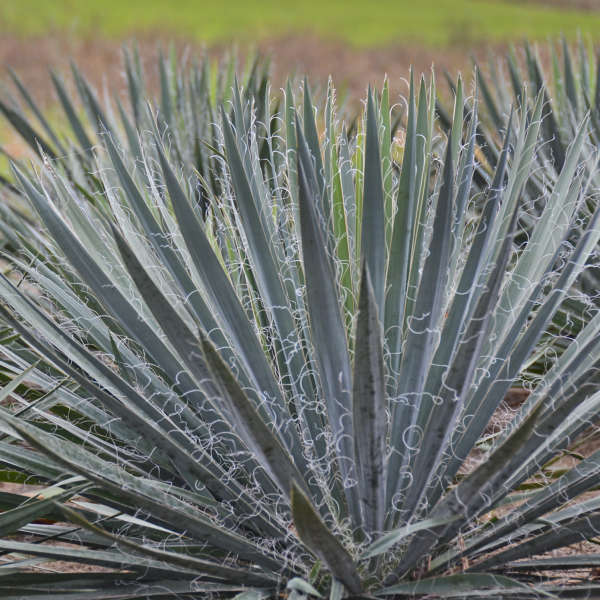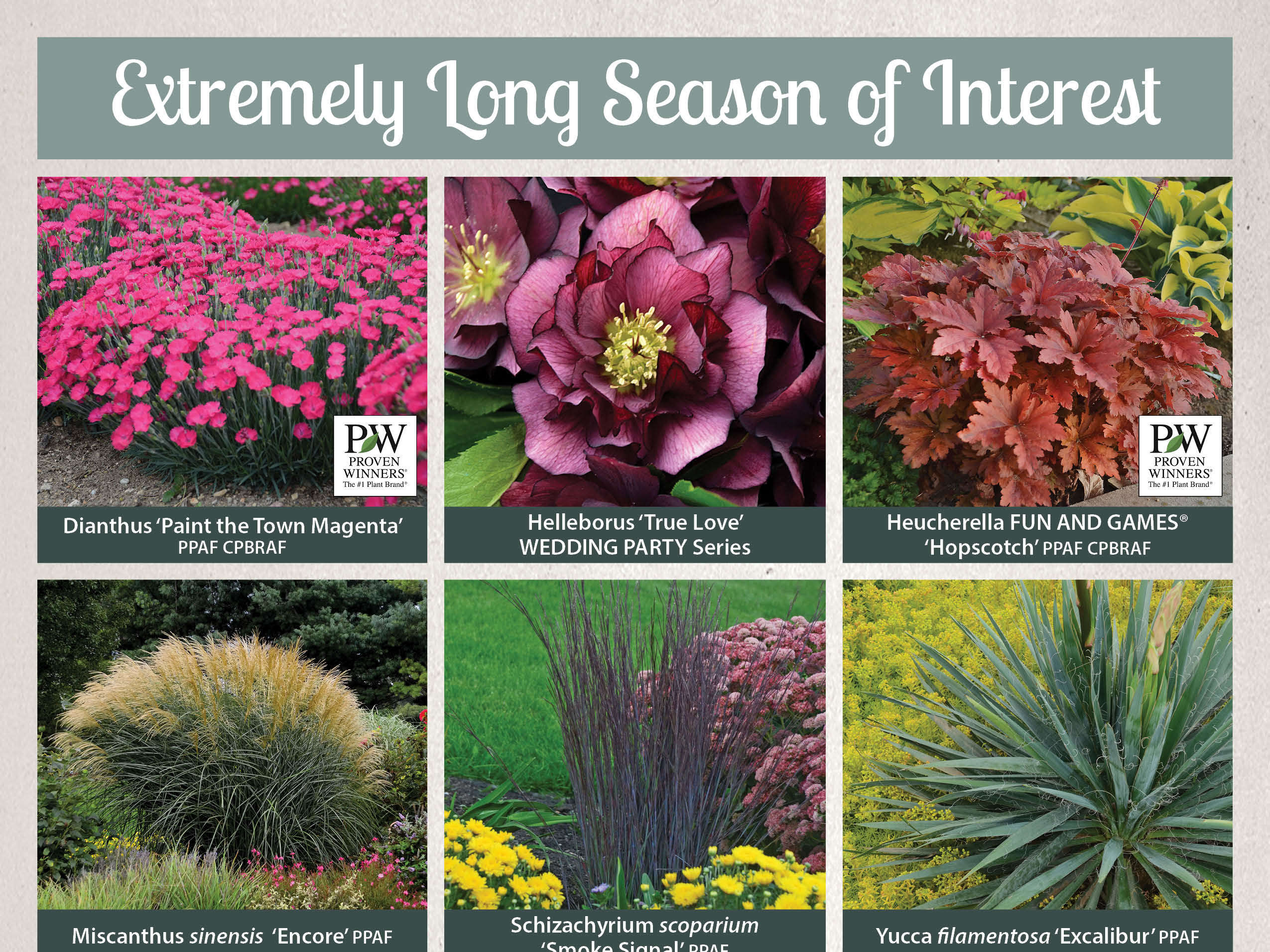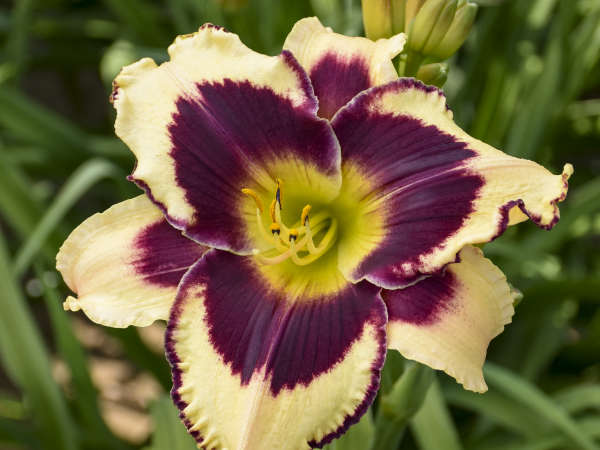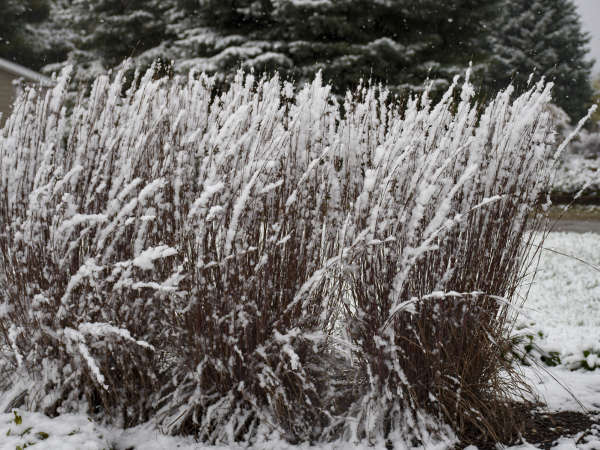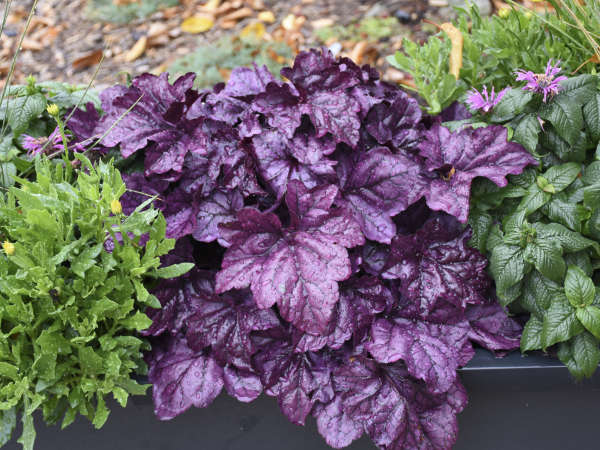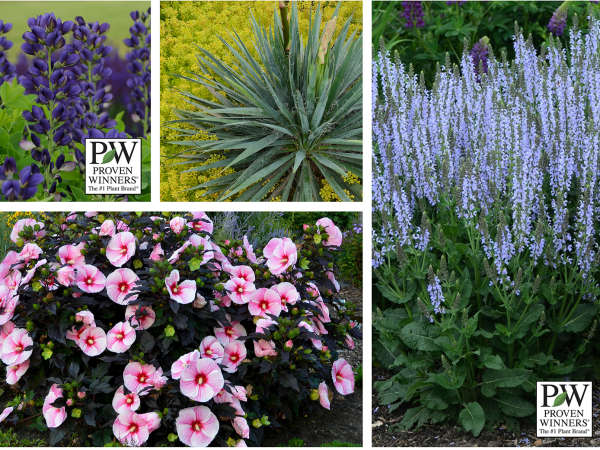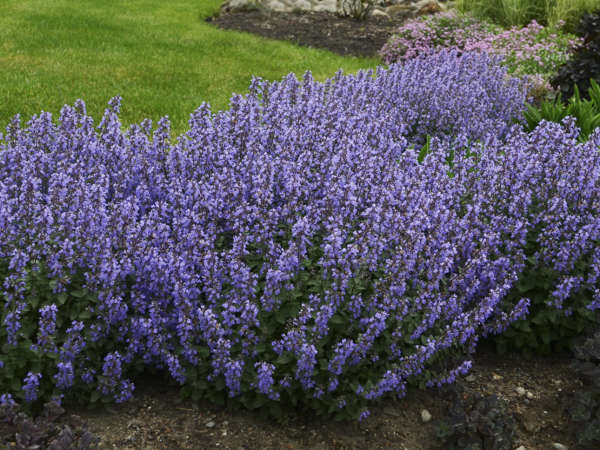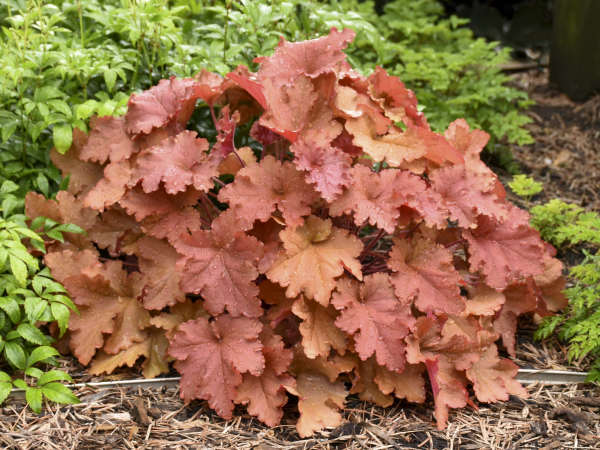Extremely Easy to Grow
1 of 43
Add water and watch them grow. Use this list as a start to browse dozens of easy to grow perennials. These plants require little attention and little maintenance to thrive year after year.
2 of 43
Allium (Ornamental Onion)
Alliums are charming plants for the rock or herb garden. When the foliage is bruised, it smells like onions since they are in the onion family. Butterflies and honeybees adore the flowers' sweet nectar but deer and rabbits steer clear of this perennial beauty.
Full to Part Sun | Zones 4-8
Variety Pictured: Allium 'Serendipity'
Learn More

3 of 43
Achillea (Yarrow)
Yarrow is one of the easiest perennials to grow and is a good choice for beginners. All it needs is full sun and well-drained soil. It thrives in average to poor soil and is drought tolerant once established. Plants grown in rich soil tend to be tall and floppy.
Full Sun | Zones: 3-8
Variety Pictured: Achillea 'Firefly Sunshine'
Learn More

4 of 43
Agastache (Anise Hyssop)
This is one of the easiest perennials to grow; it is drought tolerant, deer resistant, and attracts butterflies and hummingbirds like crazy.
Full Sun | Zones: 6-9
Variety Pictured: Agastache 'Rosie Posie'
Learn More
5 of 43
Ajuga reptans (Bungleweed)
Ajuga is an evergreen groundcover that can grow in the shade of large trees where grass is hard to establish. Unlike many perennials that are grown only for their flowers, ajuga is prized for its attractive, colorful foliage that looks nice all year.
Full Sun to Full Shade | Zones: 4-10
Variety Pictured: Ajuga reptans 'Black Scallop'
Learn More6 of 43
Amsonia (Blue Star)
Amsonia adds a billowy, finely textured element to the landscape. It grows into a dense mass, much like a small shrub. The cool blue flowers can be useful in toning down adjacent flower colors. The most valuable feature of amsonia is its fall color; the entire plant turns a stunning shade of golden yellow. It makes an excellent backdrop for fall-blooming perennials such as sedums and garden mums.
Full to Part Sun | Zones: 4-9
Variety Pictured: Amsonia tabernaemontana 'Storm Cloud'
Learn More

7 of 43
Andropogon gerardii (Big Bluestem)
Dubbed the “monarch of the prairie”, this native grass was once the dominant component of the American tallgrass prairie. It adapts easily to a wide range of soil and moisture conditions as long as full sun is provided. This long-lived grass has a variety of uses including screening, naturalizing, restoring prairies, and nesting materials for birds and mammals.
Full Sun | Zones: 3-9
Variety Pictured: Andropogon gerardii 'Blackhawks'
Learn More8 of 43
Aquilegia (Columbine)
Aquilegia is especially lovely when allowed to naturalize in shady, woodland borders. They also have excellent potential as cut flowers, lasting up to 2 weeks in a vase.
Full to Part Sun | Zones: 4-9
Variety Pictured: Aquilegia caerulea KIRIGAMI™ Deep Blue & White
Learn More9 of 43
Armeria (Thrift, False Sea Pink)
As its name implies, Sea Pinks are found naturally along coastlines where few other plants can handle the high salt concentration. Inland, this attribute makes them useful for planting along sidewalks or driveways that are salted in winter. They are also good candidates for rock gardens, troughs, or between pavers.
Full to Part Sun | Zones: 3-8
Variety Pictured: Armeria maritima 'Bloodstone'
Learn More10 of 43
Baptisia (False Indigo)
Baptisia is easy to grow and will thrive with little maintenance. There are many potential applications in the landscape including meadow plantings, as a backdrop in borders, or as a specimen. Plants are very long-lived once established.
Full to Part Sun | Zones: 4-9
Variety Pictured: Baptisia DECADENCE® 'Lemon Meringue'
Learn More

11 of 43
Bergenia (Heartleaf Bergenia, Pipsqueak)
Bergenia can be used in a variety of ways in the landscape. It is most impressive when used as a durable, evergreen groundcover, but it can also be used in containers and rock gardens. It is quite effective at softening the hard edges of pavement and also works well as an edging or filler plant in flower borders. Bergenias are reliable evergreen perennials and are rabbit and deer resistant.
Full to Part Sun | Zones: 4-9
Variety Pictured: Bergenia 'Miss Piggy'
Learn More

12 of 43
Calamagrostis acutiflora (Feather Reed Grass)
Calamagrostis acutfilora provides a great backdrop for lower growing, flowering perennials throughout the year. It is also useful for screening purposes and will not reseed. A good choice for heavy clay soils.
Full Sun | Zones: 4-8
Variety Pictured: Calamagrostis acutiflora 'Karl Foerster'
Learn More13 of 43
Convallaria majalis (Lily of the Valley)
Despite the dainty appearance of the blossoms, Convallaria is actually a tough, vigorous groundcover. Use it to cover slopes and riverbanks or in shady woodland sites, even under trees.
Full Sun to Full Shade | Zones: 2-7
Variety Pictured: Convallaria majalis
Learn More14 of 43
Coreopsis (Tickseed)
Coreopsis is easy to grow, thriving in any well-drained soil and full sun. Once established, it is rather drought tolerant.
Full Sun | Zones: 5-9
Variety Pictured: Coreopsis verticillata SIZZLE & SPICE® 'Crazy Cayenne'
Learn More
15 of 43
Corydalis lutea
Everything about this perennial is dainty and refined. Fresh green, fern-like leaves are held in softly falling tiers, resembling the fronds of Maiden-Hair Fern. Though blooming is heaviest in late spring, Corydalis lutea will continue to produce flowers thru mid-fall if plants are kept moist. Use this plant in cottage gardens, shaded rock gardens, or in containers. Reseeds prolifically.
Full to Part Sun | Zones: 5-7
Variety Pictured: Corydalis lutea
Learn More16 of 43
Dianthus (Pinks)
Dianthus can be grown in full sun or part shade, but the foliage will not be as lush and fewer flowers will be produced if it is grown in hot, dry areas. Regular watering during prolonged dry spells will be necessary. However, they are tolerant of short periods of dryness.
Full to Part Sun | Zones: 4-9
Variety Pictured: Dianthus 'Paint the Town Magenta'
Learn More17 of 43
Dicentra (Bleeding Heart)
After putting on this fantastic display, Old-Fashioned Bleeding Hearts usually go dormant until the following spring. However, if plants are kept well-watered during the spring, dormancy may be delayed until late summer or early fall. Other bushy perennials, such as Hosta, Geranium, or Sedge, should be planted nearby to fill in the resulting gaps.
Full to Part Shade | Zones: 3-9
Variety Pictured: Dicentra spectabilis 'Gold Heart'
Learn More18 of 43
Festuca glauca (Blue Fescue)
When it comes to ornamental grasses, Blue Fescue has long been a popular choice due to its diminutive size and interesting texture.
Full Sun | Zones: 4-8
Variety Pictured: Festuca glauca 'Blue Whiskers'
Learn More
19 of 43
Gaillardia (Blanket Flower)
These perennials require little care once established. They are heat tolerant and actually prefer to be grown in poorer soils. They get their name from the manner in which they used to blanket North American prairies with their blooms. They can still be found in fields and along roadsides in the prairie region and into the Rockies.
Full Sun | Zones: 3-10
Variety Pictured: Gaillardia aristata 'Arizona Red Shades'
Learn More20 of 43
Galium odoratum (Sweet Woodruff)
A vigorous ground cover for partially shaded, moist areas with slightly acidic soil. Use it to edge pathways, as an underplanting for large shrubs, to hide dying bulb foliage, or in naturalized areas.
Part to Full Sun | Zones: 4-8
Variety Pictured: Galium odoratum
Learn More21 of 43
Geranium (Cranesbill)
Hardy geraniums are wonderful filler plants for any landscape, either residential or commercial. They blend nicely with most other perennials and offer continuous color throughout the summer months.
Full to Part Sun | Zones: 4-8
Variety Pictured: Geranium pratense 'Boom Chocolatta'
Learn More
22 of 43
Geum (Avens)
Geum is a fast grower that is rarely bothered by pests or diseases.
Full to Part Sun | Zones: 4-7
Variety Pictured: Geum 'Totally Tangerine'
Learn More23 of 43
Hemerocallis (Daylily)
One of the most common and most cultivated perennials, there are thousands of different varieties of daylilies coming in just about every size shade and color(except blue!) Daylilies can survive many harsh conditions that other plants cannot including: polluted city environments, slopes, poor and dry soils, near pavement that is salted in winter, and under Black Walnut trees.
Full to Part Sun | Zones: 3-9
Variety Pictured: Hemerocallis RAINBOW RHYTHM® 'Orange Smoothie'
Learn More

24 of 43
Heuchera (Coral Bells)
Coral bells are easy to grow and blend easily with most other perennials in the landscape. Because of their low, mounding habit, they are often used as edging along paths or in containers. Try cutting a few of the tall flower scapes for fresh bouquets.
Full Sun to Full Shade | Zones: 4-9
Variety Pictured: Heuchera DOLCE® 'Wildberry'
Learn More25 of 43
Hosta
Hostas are exceedingly popular perennials in today's gardens due to their versatility in the landscape. Their subtle colors, tall flower scapes, and broad, coarse leaves fill a niche in garden designs that few other plants can achieve. Their large leaves provide excellent coverage for dying bulb foliage. Hostas also grow well in city environments where the air may be polluted by car exhaust, etc.
Part to Full Shade | Zones: 3-9
Variety Pictured: Hosta SHADOWLAND® 'Wheee!'
Learn More26 of 43
Leucanthemum superbum (Shasta Daisy)
Shasta Daisies are all-time favorites for the perennial border. The cheery flowers begin to appear in early summer and continue on for several months if faithfully deadheaded. Shastas mix so effortlessly with other perennials that no garden should be without them!
Full Sun | Zones: 5-9
Variety Pictured: Leucanthemum superbum AMAZING DAISIES® Daisy May®
Learn More
27 of 43
Liriope muscari (Blue Lily-turf, Monkey Grass)
Blue Lily-turf can be grown in either sun or shade, though it prefers light shade and rich soil of dry to average moisture. This is an ideal plant for southern regions due to its extreme tolerance of heat, humidity, and drought. Insects and diseases do not seem to bother this plant either, so it is very low maintenance.
Full Sun to Full Shade | Zones: 5-10
Variety Pictured: Liriope muscari 'Big Blue'
Learn More28 of 43
Miscanthus sinensis (Flame Grass)
Miscanthus is versatile from a design standpoint; it can be used as a specimen, for massing or screening, in large containers, or at the pond's edge. Plant this grass where its wonderful winter interest can be enjoyed.
Full to Part Sun | Zones: 5-9
Variety Pictured: Miscanthus sinensis 'Oktoberfest'
Learn More29 of 43
Nepeta faassenii (Catmint)
Nepetas are easy to grow perennials that provide a beautiful show of color all summer long. They prefer to be planted in full sun and ordinary, well-drained soil. When Nepeta's stems are broken, they release an aroma into the air that tends to attract cats, thus its common name, Catmint.
Full Sun | Zones: 3-8
Variety Pictured: Nepeta faassenii 'Cat's Meow'
Learn More

30 of 43
Paeonia (Garden Peony)
Peonies are classic garden plants that add a bit of nostalgia and charm to the garden. Their fragrant blooms and lush foliage have made them popular for years, and with the recent resurgence in breeding, they will continue to improve. Peonies are simple to grow and can be utilized in many ways, including mass plantings, specimens, or hedges. By choosing a mixture of early, midseason, and late blooming varieties, you can have blooms for up to 6 weeks.
Full to Part Sun | Zones: 3-8
Variety Pictured: Paeonia 'Karl Rosenfield'
Learn More31 of 43
Panicum virgatum (Switch grass)
Switch grass gets its name from the peaceful swishing sound it makes when blowing in the wind. All parts of this grass are very sturdy, and will remain standing thru winter unless snows are heavy. This provides important cover for birds during the coldest days of winter. This grass is very versitile from a design standpoint; it is effective as a specimen, in masses, for screening, alongside ponds or streams, or even in large containers.
Full Sun | Zones: 3-9
Variety Pictured: Panicum virgatum PRAIRIE WINDS® 'Apache Rose'
Learn More

32 of 43
Pennisetum alopecuroides (Fountain Grass)
Pennisetum prefers to be grown in rich loamy soil with good drainage and full sun or light shade. However, it will grow in rocky or sandy soil as long as it remains fairly moist.
Full Sun | Zones: 5-9
Variety Pictured: Pennisetum alopecuroides 'Pupply Love'
Learn More
33 of 43
Penstemon (Beardtongue)
Penstemons should be grown in full sun and very well-drained soil. Use Penstemons in the border, for naturalizing, and for cut flowers.
Full Sun | Zones: 3-8
Variety Pictured: Penstemon 'Midnight Masquerade'
Learn More

34 of 43
Perovskia atriplicifolia (Russian Sage)
The ideal plant for hot, dry climates! Russian Sage is classified as a subshrub or woody perennial. It performs very well in full sun and any well-drained soil. Average to dry moisture levels are ideal, and few pests bother this plant. If pruning is necessary, do so in Spring when new growth appears. Prune back to just above the lowest bud.
Full Sun | Zones: 4-9
Variety Pictured: Perovskia atriplicifolia 'Denim 'n Lace'
Learn More

35 of 43
Phlox subulata (Creeping Phlox)
Creeping phlox is a low-growing species which forms a carpet-like mat no taller than 6". This popular little perennial is best utilized in rocky areas, on slopes, and in flower borders.
Full Sun | Zones: 3-9
Variety Pictured: Phlox subulata SPRING BLING™ 'Pink Sparkles'
Learn More

36 of 43
Rudbeckia (Black-Eyed Susan)
Black Eyed Susans are one of the most popular perennials available today, having earned the prestigious Perennial Plant of the Year Award in 1999. It is an excellent perennial for providing color in late summer and is especially showy in mass plantings.
Full to Part Sun | Zones: 4-9
Variety Pictured: Rudbeckia 'American Gold Rush'
Learn More37 of 43
Salvia
Salvia is easy to grow in almost any climate. Though it is drought tolerant, it will bloom better with regular watering. Deadheading encourages a longer bloom time. If plants get leggy during the season, cut them all the way back to the newly developed foliage. If cut back, plants may rebloom in fall but often the flowers are fewer and smaller.
Full Sun | Zones: 3-8
Variety Pictured: Salvia nemorosa 'Pink Profusion'
Learn More

38 of 43
Schizachyrium scoparium (Little Bluestem)
Schizachyrium is a great choice if you are looking to restore an eroded site, or for a plant that will grow in hot, dry areas where other plants have a hard time surviving.
Full Sun | Zones: 3-9
Variety Pictured: Schizachyrium scoparium PRAIRIE WINDS® 'Blue Paradise'
Learn More

39 of 43
Sedum (Stonecrop)
Tall, upright sedums form substantial clumps of foliage which can be substituted for shrubs in the landscape. Their stout, sturdy stems support the massive flower heads which develop in summer and burst into bloom in fall. If left standing, they provide winter interest and food for birds.
Full Sun | Zones: 3-9
Variety Pictured: Sedum ROCK 'N GROW® 'Lemonjade'
Learn More

40 of 43
Sempervivum (Hen & Chicks)
Sempervivum is comprised of one large rosette called the "hen" which sprouts many smaller rosettes around it called "chicks". As the plants age, the "hen" may die out and be replaced by the "chicks". Plants can be divided easily at any time by pulling up some of the "chicks" and replanting them elsewhere. This plant is particularly effective when planted in the cracks and crevices of stone walls or walkways. It is also very attractive in containers.
Full Sun | Zones: 3-8
Variety Pictured: Sempervivum 'Ruby Heart'
Learn More41 of 43
Stachys (Stokes' Aster)
Stokesia is a native North American wildflower. It has been grown for many years for its beautiful flowers and ease of culture. Because of its heat tolerance, it is widely grown in the south. Blooming from midsummer to early fall (if deadheaded), it is a tremendous accent to yellow, pink, or white mums and other late bloomers.
Full to Part Sun | Zones: 4-8
Variety Pictured: Stachys monieri 'Hummelo'
Learn More42 of 43
Veronica (Spike Speedwell)
This perennial is tolerant of a wide range of well-drained soil types. Amending soils, especially very heavy and light types, with generous amounts of organic matter will result in improved performance. Although tolerant of partial shade, it will flower better in full sun.
Full to Part Sun | Zones: 4-8
Variety Pictured: Veronica MAGIC SHOW® 'White Wands'
Learn More

43 of 43
Yucca (Adam's Needle)
Yuccas thrive in any type of well-drained soil including those that are very dry. Though they will grow in partial shade, they reach their full potential only if they receive sun all day long. Many yuccas do not bloom until they are mature. Once they start, though, you will see that they were worth the wait. The flower stalks retain some ornamental value after the blooms have faded.
Full to Part Sun | Zones: 4-8
Variety Pictured: Yucca filamentosa 'Excalibur'
Learn More
